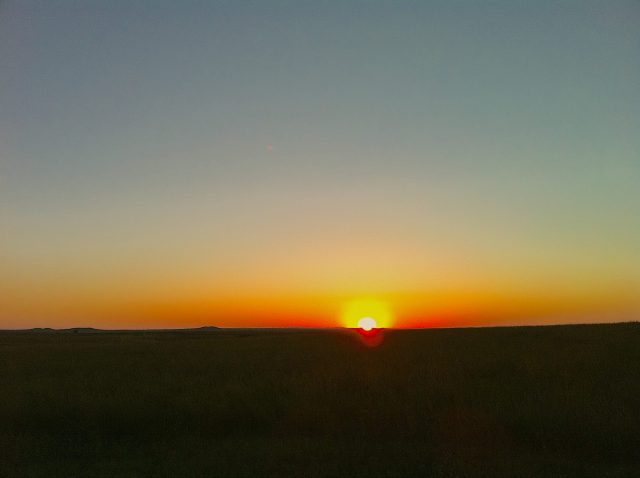
The Sitting Bull And Sacagawea Monuments In South Dakota: A Serene And Solemn Place For Reflection
As I was heading north through South Dakota on the “Road To Nowhere” (US-83) I realized I was only a couple of hours away from the North Dakota border. Not knowing if I’d ever have the opportunity to set foot in and get credit for a very remote state (I actually ended up in North Dakota seven years later anyway), I decided to go about five hours out of my way to check that box. As I neared the border I started seeing signs for the “Tatanka Yotanka Sitting Bull Monument” – a site that ended up being just off the highway. Intrigued, I added ANOTHER hour of driving to check it out…
I have to admit, as much as I love history, I have a major knowledge gap when it comes to the indigenous peoples on this side of the world. I knew Sitting Bull was an important guy, but I wasn’t totally clear on just what it was that he did. The memorial site didn’t really tell much of a tale about the man who led his people to defeating General Custer, but what it did was provide a solemn place to reflect on our nation’s complicated (often bloody and sometimes embarrassing) history and relationship with the people who were here thousands of years before the Europeans arrived.
A lot of thought was put into this place – which stands in stark contrast with the massive, mountain-crushing Crazy Horse Monument near Mount Rushmore (amazingly the Sitting Bull and Crazy Horse monuments were designed by the same guy). One touch I especially liked was that they have the statue of Sitting Bull (which stands over his grave) facing east, looking upon the Missouri River in the direction of his childhood home. I’m pretty sure that when I was there I also read that he loved sunrises, which is another reason his statue faces that direction.
Amazingly, right next to the Sitting Bull Monument – a shrine to resistance AGAINST the American concept of “Manifest Destiny” – is the Sacagawea Memorial. Sacagawea, you may remember from 5th grade history class, was the indigenous woman who accompanied the Lewis and Clark expedition as a guide. She helped the 19th century explorers carve out a route that was utilized as part of the Oregon Trail – an extremely fitting stop for me as much of my westward route was following in her footsteps.

The memorial and the monument are within sight of each other… rebellion and cooperation… two competing responses to the foreigners in their land. A land that even now, hundreds of years after they lived and died, is still a place of contradictions.
It was also an incredibly beautiful, solemn, and quiet place.

There was a family there when I arrived but they left not long after I got out of my car. So then it was just me, Sitting Bull, Sacagawea, and the setting sun going down on the Great Plains. Also because of where it is in the time zone map (and because it’s relatively far north), you get about an extra hour of daylight when compared to Chicago, since they’re on opposite ends of the Central Time Zone.

This is an amazing and solemn place to reflect on the nation’s history and take in the peaceful, isolated, and serene natural beauty of the North American heartland.
After watching the sun go down behind the hills by myself for about an hour, pondering just where I would end that day, I quietly nodded to Tatanka Yotanka and Sacagawea, hopped into my car and headed north for the North Dakota border.
Verdict: A solemn, serene, beautiful, and inspiring use of the time you are given.
3 thoughts on “The Sitting Bull And Sacagawea Monuments In South Dakota: A Serene And Solemn Place For Reflection”
A beautiful reflection… I rode back from Sturgis one year specifically to stop there, to someway pay my respects. I stopped just before I got there watching the wind play on the flowing grasses below the rode. Like waves. More than the monument I remember that. Wether His remains are there… His Spirit is there.
Thank you Dennis. It really is a very special place! And because it’s so out of the way I suspect it will always be a special place where people can reflect in solitude and respect.